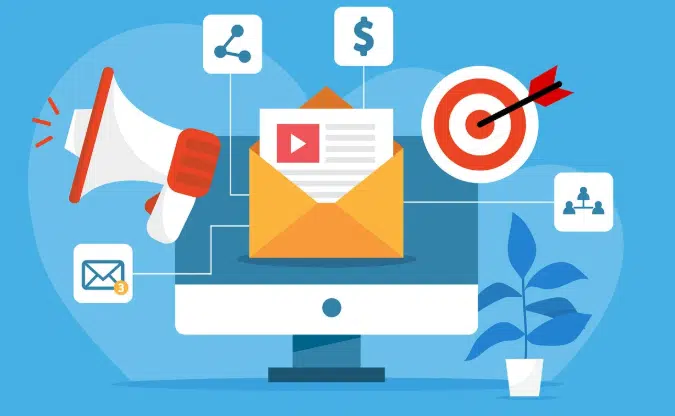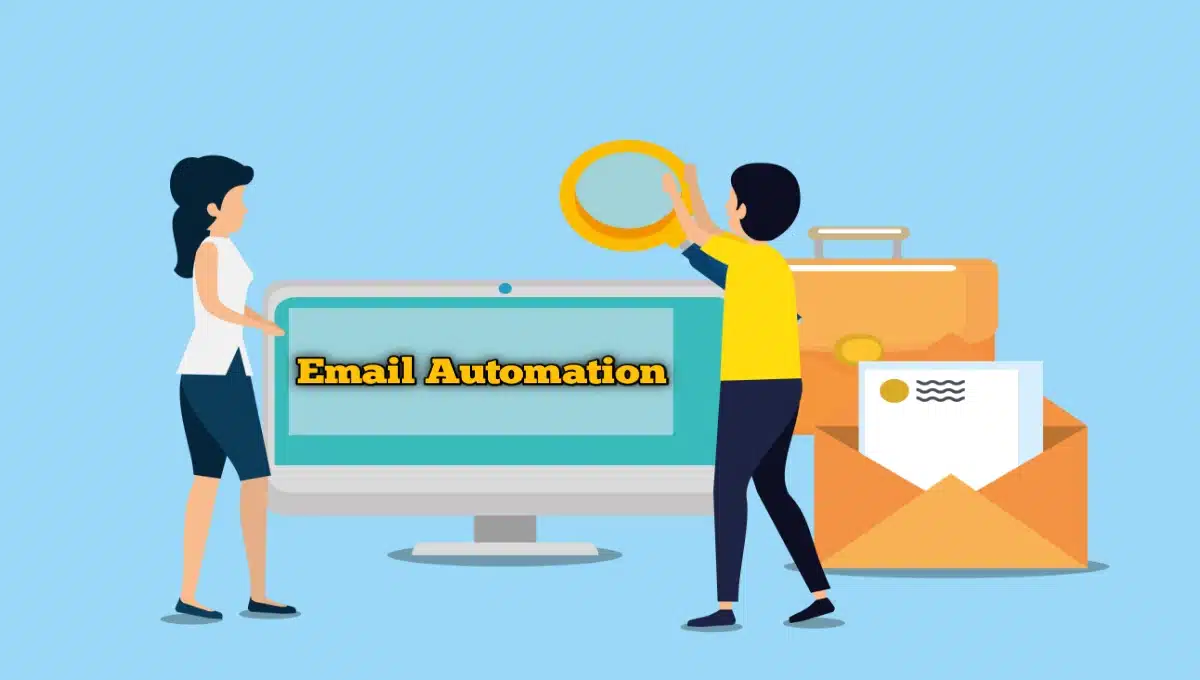Email automation can save small businesses time and resources. It helps streamline communication and improve efficiency.
For small businesses, managing emails can be overwhelming. With limited staff and many tasks, handling emails manually is tough. Email automation offers a solution. It can schedule, personalize, and send emails automatically. This not only saves time but also ensures timely communication.
Small businesses can focus more on growth and less on repetitive tasks. In this blog, we will explore the benefits of email automation for small businesses. Discover how it can enhance productivity, improve customer engagement, and drive business growth. Let’s dive into the world of email automation and see how it can help your small business succeed.
Introduction To Email Automation
In the fast-paced world of small businesses, finding ways to save time and increase efficiency is crucial. One method that has gained significant traction is email automation. If you’re new to this concept, don't worry—I'm here to break it down for you. Let’s dive into the basics of email automation and explore how it can be a game-changer for your small business.

What Is Email Automation?
Email automation is the process of sending emails to your customers automatically, based on specific triggers or schedules. Think of it as setting up a system that runs on its own. For example, when someone signs up for your newsletter, they receive a welcome email without you lifting a finger. It’s like having a personal assistant who never takes a day off.
Benefits For Small Businesses
So, why should small businesses care about email automation? Here are some key benefits:
- Time-Saving: Automation allows you to set up email sequences once and then let them run on autopilot—no more manual email sending.
- Consistency: Your messaging stays consistent because the emails are pre-written and scheduled. This ensures that every customer receives the same high-quality communication.
- Personalization: Automated emails can be customized with the recipient's name and other details, making your messages more personal and engaging.
- Increased Engagement: With timely and relevant emails, you can keep your audience engaged and interested in your products or services.
- Better Analytics: You can easily track the performance of your email campaigns. See who opens your emails, what links they click, and how they interact with your content.
Imagine this scenario: You run a small bakery. Every time someone orders a cake, they receive an email with care instructions. A week later, they get a follow-up email asking for feedback. You set this up once, and it runs smoothly, ensuring customer satisfaction and gathering valuable reviews. Sounds great, right?
In conclusion, email automation can be a powerful tool for small businesses. It helps you save time, maintain consistency, personalize your communication, increase engagement, and track your success. Ready to give it a try? You won’t look back!
Setting Up Your Email Automation System
Email automation helps small businesses save time and stay organized. It also improves communication with customers. Setting up an email automation system might seem complex. But with the right guidance, it is manageable.
Choosing The Right Tools
Start by selecting the right email automation tools. Many tools are available. Choose one that fits your business needs. Popular options include Mailchimp, Constant Contact, and SendinBlue. These tools offer user-friendly interfaces. They also provide templates to make your emails look professional.
Consider the features each tool offers. Look for customizable templates, segmentation options, and analytics. Also, check if the tool integrates with your current systems. This will make the setup process smoother.
Integrating With Existing Systems
Ensure your chosen tool integrates with your existing systems. This includes your website, CRM, and e-commerce platforms. Integration helps streamline your workflow. It ensures data flows smoothly between systems.
For example, if you use WordPress for your website, choose a tool that integrates well with it. Look for plugins or direct integration options. This will help you manage email sign-ups and customer data efficiently.
Test the integration before fully implementing it. This will help you identify any issues early. It ensures a smooth transition to your new email automation system.
Creating Effective Email Campaigns
Creating effective email campaigns is crucial for small businesses. It helps in reaching the right audience. This leads to better engagement and results. To achieve this, focus on key strategies. Segmentation targeting and personalization techniques play a significant role.

Segmentation And Targeting
Segmentation involves dividing your email list into smaller groups. These groups share common traits. This could be based on demographics or interests. By segmenting your list, you can send more relevant content. This increases the chances of engagement.
Targeting is about reaching the right people. Once you have segmented your list, tailor your messages. This ensures your emails are relevant. It also helps in improving open and click rates.
Personalization Techniques
Personalization makes your emails feel special. Start with using the recipient's name. It catches their attention. You can also use past behavior to personalize. For instance, recommend products based on past purchases.
Another technique is to offer personalized discounts. This makes customers feel valued. Use data to understand their preferences. This helps in crafting messages that resonate with them.
Analyzing And Optimizing Performance
Email automation can be a game-changer for small businesses. But how do you know if it's working? That’s where analyzing and optimizing performance come into play. This process involves looking at data to see how your emails are doing and making changes to improve results. Let’s dive into some essential strategies to help you get started.
Key Metrics To Track
Before you can optimize, you need to know what to track. Here are some key metrics:
- Open Rate: This tells you how many people opened your email. A low open rate might mean your subject line needs work.
- Click-Through Rate (CTR): This shows how many people clicked on links in your email. If your CTR is low, your content might not be engaging enough.
- Conversion Rate: This measures how many people took the desired action, like making a purchase. A low conversion rate might indicate a problem with your offer or landing page.
- Bounce Rate: This tells you how many emails couldn’t be delivered. High bounce rates could mean your email list needs cleaning.
- Unsubscribe Rate: This shows how many people opt out of your emails. If this rate is high, you might be emailing too often or your content might not be relevant.
A/b Testing Strategies
A/B testing is a powerful way to optimize your email campaigns. It involves sending two versions of an email to see which one performs better. Here’s how to do it:
- Choose a Variable: Pick one thing to test at a time, like subject lines, images, or call-to-action buttons.
- Create Two Versions: Make two versions of your email. Keep everything the same except for the variable you’re testing.
- Send to a Small Sample: Send each version to a small part of your email list. This helps you see which one performs better without risking your entire list.
- Analyze Results: Look at the key metrics to see which version did better. Use this information to improve future emails.
- Implement Changes: Apply the winning elements to your next email campaign. Repeat the process to continuously improve.
Remember, the goal is to keep learning and improving. Email automation isn’t a one-time setup; it’s an ongoing process. By analyzing and optimizing performance, you can make sure your emails are always working as hard as they can for your business.
Case Studies And Success Stories
Case studies and success stories help small businesses understand email automation's impact. Real-world examples show how companies use automation to improve their operations. Lessons learned highlight challenges and solutions. This knowledge can guide others in their email marketing efforts.

Real-world Examples
Small Bakery Inc. used email automation to send personalized birthday offers. Within three months, sales increased by 30%. The automated system targeted customers with tailored messages, making them feel special and valued.
Another example is the Eco-Friendly Store. They implemented a welcome email series for new subscribers. This series shared their brand story and product benefits. As a result, their engagement rates doubled. Customers felt more connected to the brand.
Lessons Learned
Small Bakery Inc. learned the importance of segmentation. They divided their email list based on customer preferences. This approach led to higher open and click-through rates. It showed that understanding your audience is crucial.
Eco-Friendly Store found that consistency is key. They maintained a regular email schedule, which kept their brand top of mind for customers and built trust and loyalty.
Both businesses discovered the value of testing. Small Bakery Inc. tested different subject lines. Eco-Friendly Store experimented with email content. These tests helped them understand what resonated with their audience.
Email automation can transform small business marketing. Real-world examples and lessons learned offer valuable insights. They show that with the right strategies, businesses can achieve significant results.
Frequently Asked Questions
What's The Best Email Platform For A Small Business?
The best email platform for a small business is Google Workspace. It offers professional email, reliable security, and collaboration tools.
What Is The Best Email Automation Tool?
The best email automation tool is Mailchimp. It offers user-friendly features, robust analytics, and excellent integration options. Ideal for businesses of all sizes.
How Much Does An Automated Email System Cost?
An automated email system typically costs between $10 to $1,000 per month, depending on features and user volume.
Is Mailchimp Email Automation Free?
Mailchimp offers basic email automation for free. Advanced features require a paid plan.
Conclusion
Email automation can transform your small business. Save time and increase productivity. Build stronger relationships with your customers. Stay organized and efficient. Your business can grow without extra effort. Start small and scale up as needed. Email automation is a smart choice.
Keep things simple and see the benefits. Invest in tools that fit your needs. Your business deserves the best.
Learn More Best Email Marketing Tools

